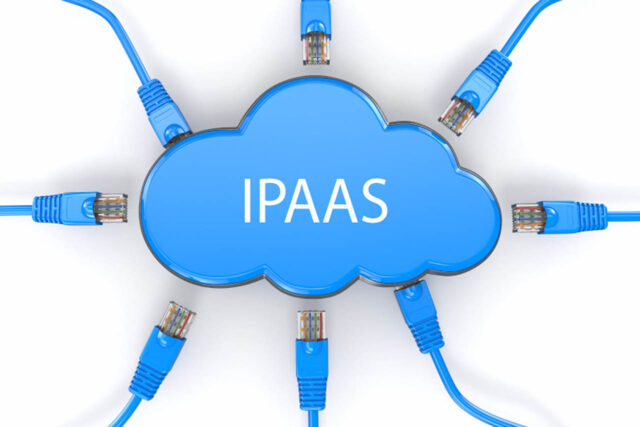
Today’s customer bases are fast paced, growing rapidly, and driven by tech. To keep up, business units within larger organizations are frequently coming up with their own technology stacks— without input from IT.
While these new systems are effective in their core areas, they are often not configured to communicate with the existing infrastructure.
The resulting fragmentation becomes a problem when it comes to integrating these new systems with legacy processes and existing tech stacks. This issue has made finding the right iPaaS (integration platform as a service) integration and automation platform a key concern.

What is iPaaS?
A powerful solution, an integration platform as a service gives employees within an organization the ability to construct and implement integrations, as well as automated workflows, across multiple platforms.
Consider a HubSpot integration as an example. The best HubSpot integrations give users the ability to quickly connect HubSpot products to any other cloud application to flow data seamlessly across your applications without data errors, desyncing, or timeouts.
Given the wide variety of apps and systems operating within a contemporary enterprise setting, along with the variances within employee profiles in need of automated solutions, choosing the right iPaaS vendor becomes of paramount importance.

Choosing the Right Platform for Your Organization
There are several key considerations to ponder when reviewing iPaaS platforms. Among them are:
User Friendliness – Because you cannot count on all your employees to be adept with this technology, the platform must be as easy to use as possible. In addition to facilitating adoption, user friendliness also opens avenues for the rank and file to innovate broader implementations for automations because the platform is easy to understand and employ.
Desirable traits include a simple visual interface, the ease with which people can construct connectors regardless of their skill level in a low code, or ideally a no code, environment. Testing and debugging workflows with minimal IT skills should also be readily accomplished.
Rapidity of Deployment – Speed is one of the key watchwords of today’s business environment. Of course, along with that speed must come accuracy, or it will be of little value. The best iPaaS platforms are capable of delivering value instantly and can be implemented with minimal effort, even by fledgling users who are just becoming acquainted with automation.
Attributes to seek in this regard include a library of plug and play connectors for the most common applications. The ease with which new connectors can be built and existing connectors can be extended should also be considered. Shareability and reuse of connectors should be deliberated as well. A collection of connectors and flows facilitating the deployment of pre-constructed automations is desirable too.
The world of tech is changing at an eye-watering rate. Whether you’re in finance, marketing, manufacturing, or any other industry, your app functionality needs not only to keep up with the Joneses, but to keep ahead of them.
When you have a customer-facing app, you need to ensure that it’s always updated with the newest tools and trends, offers cutting-edge features, and is perpetually responsive. If it lags behind in terms of features and functionality, that will impact on your user loyalty. Your app is used every day — you can’t afford for it to go down for a few hours while you update capabilities.
Finally, your competition is always out there pushing to take advantage of any misstep you make. Speed of deployment affects your bottom line, making it one of the core DevOps metrics. Continuous integration (CI) and continuous delivery (CD) are now established principles that are standard in almost every business. The huge advantages that come with incremental, ongoing changes and deployment via Kubernetes, microservices, and containers have been proven and embedded into every business practice. While DevOps tools and practices are standard almost everywhere, there’s still one DevOps tool left to go.

Scalability – A need for continually recurring capacity planning, resource provisioning, and infrastructure management should be avoided as your business expands. You want fully cloud-native architecture built for pace, straightforward operation, high availability, and low total ownership cost as your operations expand.
You’re looking for a vendor with demonstrable success in making and delivering well-designed products for the cloud-native era. They should also have a proven ability to assist with the achievement of strategic goals and operational successes. And, they should have the ability to provide references of customers who have successfully employed their platform to run mission-critical workflows.
Adaptability – Seldom are any pair of situations identical. Today’s organizations can be broadly diverse in terms of personnel, applications, locations, and operations. The vendor you choose should be capable of adapting to your specific needs, as opposed to expecting you to adapt your needs to their offering.
Qualities to seek in this regard include the ease with which a variety of apps and services can be connected, using existing connectors, databases, ERP, and existing systems. The ability to launch workflows with a broad array of process triggers should also be present. Ease of modification, testing and launching workflow logic updates is another key concern.
Security – Data breaches are all too common and they can be crippling in terms of cost and customer confidence. This makes the need for robust security protocols, as well as strict compliance and governance of significant importance.
The best platforms deliver the most contemporary platform and product security features, encompassing access management, audit trails and logging, as well as data visualization and flows. These products are developed with security in mind, rather than added as an afterthought. They provide easy viewing of end-to-end integration and automation flows. And they make it easy to comply with HIPAA, GDPR and security audits.

In Summary
Finding the right iPaaS integration and automation platform is more readily accomplished when using these tips as a guide. Deployed successfully, the right iPaaS platform can help your organization experience greater success, in a scalable manner.









